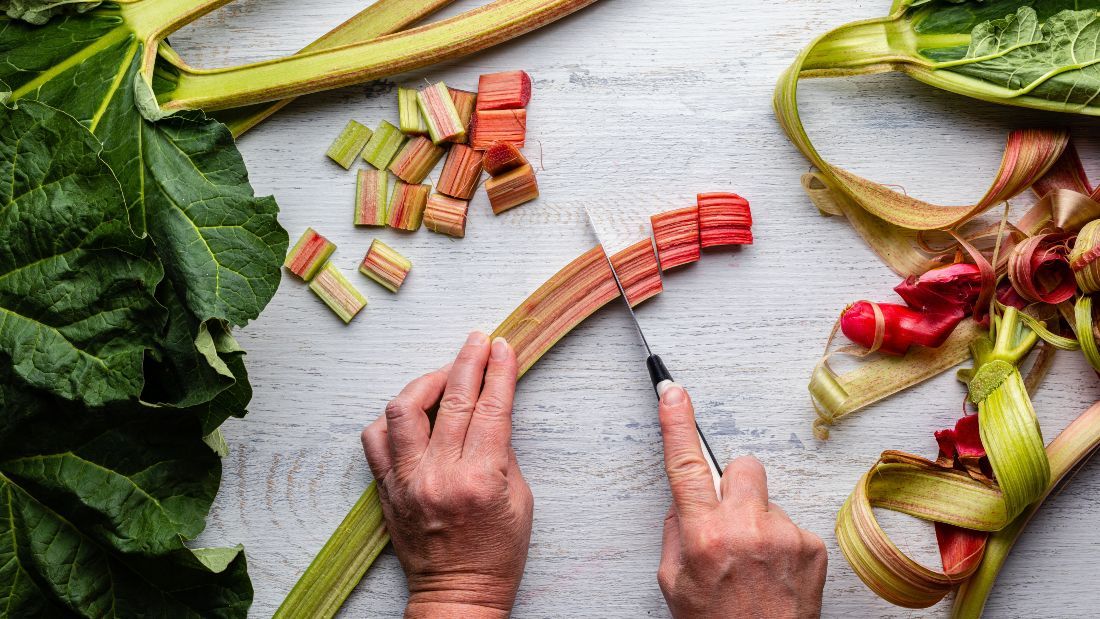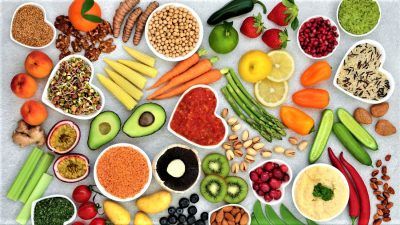The health benefits of 10 seasonal foods

With spring now in full swing and summer on the way, it’s time to take full advantage of nature’s bounty. Eating locally grown, seasonal fruit and vegetables is not only great for reducing our carbon footprint but it will help ensure we eat a variety of fresh wholefoods throughout the year. Here are 10 of the UK’s seasonal foods and the host of health benefits they offer:
1. Asparagus
Asparagus, once considered a member of the lily family but now classed in the Asparagaceae family, can be grown in the UK between April and June. It is low in calories but high in nutrients and contains impressive amounts of vitamins C, A and K. The latter is essential for healthy blood function and for building strong bones. Asparagus has also been shown to lower blood pressure, improve digestive health due to its fibre content, and support a healthy pregnancy thanks to its folate content. Some people notice asparagus makes their urine smell rather unpleasant – this is caused by the metabolism of asparagusic acid and isn’t anything to worry about.
2. Broad beans
Broad beans, also known as fava beans, can be grown in the UK between May and September. Beans are a great source of protein, complex (healthy) carbohydrates, several B vitamins, vitamin K, calcium, potassium, iron and zinc. Broad beans contain lectins, a chemical which has been shown to slow or even halt bowel cancer in its tracks. There is also evidence to suggest that broad beans can lessen the symptoms of Parkinson’s disease as they contain levodopa – which is used as a medication for the disease.
3. Carrots
The trusty carrot is a root vegetable and can be grown in the UK all year round – so is always seasonal! Carrots are high in a type of carotenoid called beta-carotene, which is used by the body to produce the special pigment in our eyes that allows us to see in low-light conditions. The consumption of carotenoids, such as beta-carotene, has been linked to a reduced risk of diabetes, cardiovascular disease, lung cancer and bowel cancer. It is also protective against the most common cause of vision loss – age-related macular degeneration.
4. Cauliflower
Cauliflower is a cruciferous vegetable, like broccoli and kale, that can be grown all year round in the UK. Cruciferous vegetables contain antioxidants and phytonutrients that have a protective effect against many forms of cancer. One such antioxidant is indole-3-carbinol that has been shown to reduce the risk of reproductive cancers in men and women. Sulforaphane, another chemical found in cruciferous vegetables, also fights cancer. Cauliflower is also high in calcium and vitamin K, which work together to help build strong bones.

5. Peas
Peas (ie green peas, petits pois, sugar snap peas) are little legumes that can be grown in the UK between June and September. But don’t let their diminutive size fool you – peas are packed full of vitamins, minerals, antioxidants, and phytonutrients. Like carrots, peas contain lutein and zeaxanthin that help protect your eyes from chronic diseases and degeneration. Peas also contain anti-cancer chemicals, including coumestrol which protects against stomach cancer. In addition, these powerful green pods bolster our immune system, reduce the inflammation associated with diabetes, heart disease and arthritis, and their high protein and fibre content keeps our blood-sugar levels in check.
6. Rhubarb
Despite seemingly quintessentially British, rhubarb’s roots stretch back to Asia where it has been used in traditional Chinese medicine for centuries. It is naturally in season between April and July but can be grown in the UK almost all year round and is popular in crumbles, compotes and jams. Rhubarb is actually a vegetable with toxic, inedible leaves, so it’s surprising it has become so popular in desserts, but all the goodness is hiding in the stalks. Rhubarb is high in vitamin K for blood and bone health, and vitamin A which supports healthy skin. Rhubarb has been shown to lower cholesterol and therefore reduce the risk of heart disease, fight inflammation and prevent cancer.
7. Rocket
Rocket (also known as arugula and rucola) is a peppery, leafy green that can be grown in the UK between April and October. Like cauliflower and broccoli, it is a member of the cruciferous family and shares their cancer-fighting properties. Rocket contains erucin, a compound that has been shown to inhibit the growth of tumour cells. It is also high in a number of other vitamins and minerals, including calcium, potassium, folate, and vitamins C, K and A.
8. Spring onions
Spring onions (also known as scallions) are an allium vegetable and can be grown in the UK between April and October. Spring onions offer many health benefits. Researchers believe that a chemical called allicin may prevent cells from turning cancerous or slow tumours from spreading. Spring onions also have antimicrobial properties, which means they can help fight bacterial, fungal and viral infections. They’re also high in antioxidants to combat oxidative stress; one cup provides a quarter of our vitamin C needs and twice the daily dose of vitamin K. Although people with irritable bowel syndrome sometimes struggle with alliums (eg onions and garlic), some find they are able to tolerate the green tops of spring onions.
9. Watercress
Watercress is another cruciferous leafy green vegetable which can be grown in the UK between May and November. If it seems like there are too many cruciferous veggies in this list, it’s because we really can’t get enough of them. Watercress is particularly high in vitamin K, with substantial amounts of vitamins C and A, and small amounts of many other important vitamins and minerals. Like its cruciferous relatives, watercress contains cancer-fighting chemicals called glucosinolates. But what makes watercress truly special is its outstanding antioxidant content. A 2018 study found that watercress contains over 40 unique flavonoids, and its ability to neutralise free radicals wiped out the competition.
10. Wild garlic
Wild garlic is a plant of shady, damp woodlands, particularly common in ancient woods. The best time to pick wild garlic is March and April as when the plants bloom, usually in late April and May, the leaves can acquire a slightly bitter taste.
Wild garlic is rich in specific antioxidant sulphur compounds that are anti-inflammatory and help to fight both infection and inflammation. Wild garlic can also reduce blood cholesterol levels and lower blood pressure by relaxing blood vessel walls. Therefore, helping to prevent stroke and other cardiovascular problems. But that’s not where wild garlic’s benefits end. It has antibacterial, antimicrobial, antibiotic, antiseptic and antiparasitic effects. Whether you’re fighting a flu, a yeast infection or recovering from a digestive problem, wild garlic can help.

We don’t need to look to exotic superfoods grown in far-flung destinations to reap all the health rewards of a plant-based diet. A surprising variety of fresh fruit and vegetables can be grown in the UK throughout the year (check out our Fruit & Veg Calendar here) providing us with all the nutrition we need.







